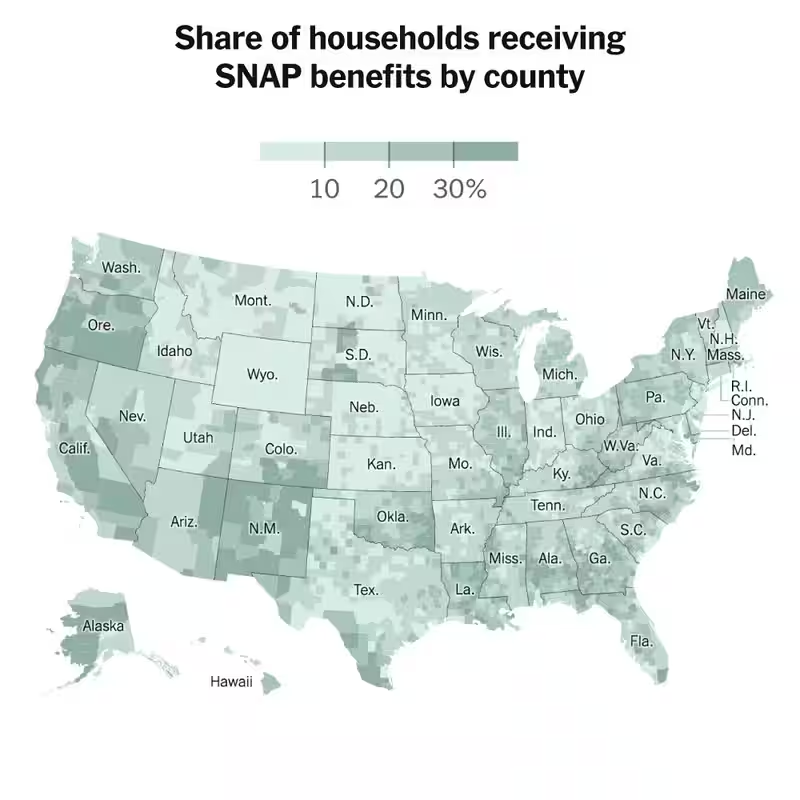The Supplemental Nutrition Assistance Program (SNAP), America’s largest food assistance safety net, is facing a critical disruption that could leave millions scrambling for their next meal. While the political debate rages in Washington, the reality on the ground is stark: this isn’t just a partisan issue—it’s a national one.
SNAP Cuts: A National Crisis in the Making
At the heart of the current crisis is a potential shutdown of federal funding that would halt the replenishment of SNAP benefits. Two federal judges are poised to rule on whether the government must continue these vital payments during a shutdown, a decision that hangs in the balance for over 40 million Americans . The consequences of a lapse are severe, with mayors across the country warning it will not only increase poverty but also cripple local efforts to ensure food security and public health .
Mapping the Impact: It’s Not Just Blue States
A common misconception is that SNAP recipients are concentrated solely in Democratic strongholds. While it’s true that a larger number of beneficiaries reside in districts represented by Democrats, the program’s reach is truly universal. Data from the Food Research & Action Center shows that every single congressional district in the nation has a significant population relying on these benefits . From rural communities in the Midwest to urban centers on the coasts, the SNAP program is a lifeline that touches every corner of the country.
By the Numbers: Who Depends on SNAP?
To understand the scale, consider these figures:
| Demographic | Percentage of SNAP Households |
|---|---|
| Households with Children | Approx. 60% |
| Households with Elderly or Disabled Members | Approx. 40% |
| Working Families | Over 50% have at least one working adult |
This data reveals that SNAP is not a handout but a crucial support system for working families, seniors, and people with disabilities who are struggling to make ends meet.
The Ripple Effect on Local Communities
The impact of SNAP disruptions extends far beyond the grocery store. In Los Angeles, the Unified School District (LAUSD) is already preparing emergency plans to support families who will lose this critical aid, highlighting the strain on local institutions . The economic ripple effect is also significant; every $1 in SNAP benefits generates between $1.50 and $1.80 in economic activity, supporting local farmers, grocers, and the broader economy.
What’s Next for Food Aid?
As the deadline looms, Democrats are demanding that any government funding deal include an extension for SNAP, while Republicans have proposed deep cuts as part of their budget plans . The proposed cuts from the Trump and House Republican agenda are not just about immediate hunger; they threaten the long-term health and development of millions of children who rely on this stable source of nutrition .
The fate of SNAP now rests in the hands of the judiciary and a deeply divided Congress. For the millions of Americans who depend on it, the uncertainty is more than a political talking point—it’s a daily reality of wondering where their next meal will come from.




